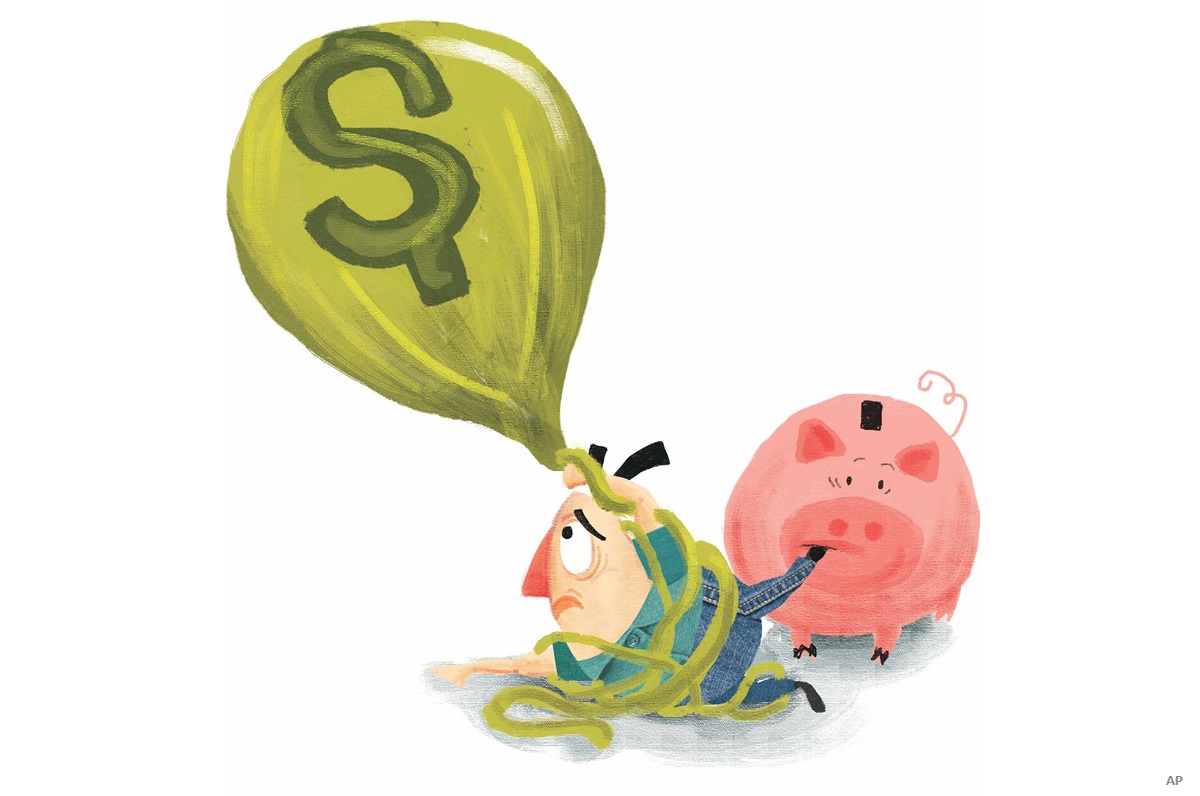
Global infrastructure stocks have been struggling for two years, beset by rising interest rates and negative investor sentiment. Yet while veteran stock picker Kevin McSweeney acknowledges that the stocks have been under pressure, he also maintains that the longer-term outlook is generally positive and patient investors will be rewarded.
“The main thing holding back the sector this year has been interest rates,” says McSweeney, lead manager of the 5-star $532.9 million CI Global Infrastructure F and senior vice-president at Toronto-based CI Global Asset Management. “We divide infrastructure into four parts, as does our benchmark, the MSCI World Core Infrastructure Net Return Index. We use the acronym PUTT, which stands for Pipelines, Utilities, Telecom infrastructure such as cell phone towers, and Transportation, such as railways and toll roads. Utilities and the telecom sector have been particularly affected by the back-up in interest rates.”
While higher borrowing costs hold back utilities, McSweeney notes that there has been very little wrong within their underlying performance. “Cash flows for the category have been good. The recovery from the pandemic continues to progress. There have been very few earnings blow-ups. It’s simply been a de-rating of the category,” says McSweeney, adding that in the past couple of years, the stocks have gone from trading at a premium of 3.75 multiple points over the MSCI All Country World Index and slipped to a 2.4 multiple point discount to the index. He notes that in addition to higher interest rates, there is a factor specific to the sector that has also hurt. “It’s really hard to build things. Some of the utilities, the pipelines, and toll roads, have seen significant inflationary pressures--whether it’s permitting, or the cost of inputs---to build anything, which has resulted in lower growth expectations and some cost overruns.”
Top Quartile Infrastructure Fund
Year-to-date (Dec. 11) CI Global Infrastructure F has returned 3.14%, versus 0.92% for the Global Infrastructure Equity category. In 2022, the fund returned 1.30%, versus 0.71% for the category. Over five- and 10-year periods, the fund has been a top quartile performer and returned an annualized 7.66% and 7.96%. In contrast, the category has returned an annualized 5.64% and 6.86%, respectively. The portfolio is also available through the 5-star rated $364.9 million CI Global Infrastructure Private Pool F and an exchange-traded fund (ETF) version of the private pool, with ticker CINF.
McSweeney maintains that infrastructure stocks ought to perform well as the economy goes into a slow-down, as many have predicted. “If I look at periods when the economy decelerated, such as in calendar 2019, the deceleration caused monetary policy to stop tightening, and the MSCI World Core Infrastructure Net Return Index was up 27.4%. The F series of the fund returned 26.35%,” recalls McSweeney, “Even in 2016, when the economy was slowing and monetary policy pressures eased, the index returned 10.96%, while our fund returned 8.99%. There are fears of global growth slowing and worries about less traffic on toll roads and in Canada perhaps a slowdown on the railways. But it seems to have topped out and the stocks can definitely perform despite—and perhaps even in contrast with---economic deceleration.”
Infrastructure Cash Flow is Protected
McSweeney’s point is that infrastructure stocks are so-called “long-lived” assets and even if there is some softness in earnings, “the change in the discount rate and the ability for valuations to expand should offset that in the stocks. That’s because the great thing about infrastructure is that even in an economic slowdown these tend to be protected cash flows, whether from regulation, or whether from monopolistic positioning. Think of Highway 407 in Ontario, or Canadian National Railway CNR. Who else will you deal with?” asks McSweeney, “Your oil is coming from the Enbridge ENB mainline. In a slowdown, Canadian Tire CTC.A might lose 10% in revenue. But a pipeline firm like Enbridge will only decline 2-3%.”
This point may represent a good buying opportunity since the category is down, yet McSweeney admits there are still worries that things could go wrong, painfully wrong. For instance, the Federal Reserve might make a policy error, or some countries might throw a spanner in the works. “It’s a high impact, but low probability, that the Fed will over-tighten. But, for now, the Fed is sending a message that the economy is slowing. And there is a widespread market belief that we have hit peak rates. Some of that has already been priced into the market, although there is still some momentum behind that worry [of rates rising further]… The good news is that you are in a regulated part of the economy and you could be in a big monopolistic position or, depending on the business line, you might have some barriers to entry. But, the downside is, you can’t really move,” he says.
Regulators Pose a Risk
By way of example, McSweeney points out that French regulators plan to put an extra tax on infrastructure concessions such as toll roads. Unfortunately, the toll road operators can’t simply up and move to another jurisdiction, where regulators may be more sympathetic. Similarly, utility regulators might decide that a utility’s returns should be lowered. “If a regulator says ‘we believe your cost of capital is 7%, instead of 8.5%,’ that will take your profit estimates down. If you’re investing on a 7% regulated rate of return, perhaps you will grow less,” says McSweeney, adding that regulatory changes have occurred in Mexico, although he sold some of his position in time. “What I do worry about are the individual regulatory decisions that are made in jurisdictions where the assets are monopolistic or committed to being there, more or less.” In some instances, however, McSweeney got in after a regulatory decision and was able to buy a cheap stock.
Starting from a top-down view, McSweeney allocates sector weights according to where the most favourable macroeconomic factors and underlying industry dynamics are at work. From there, he assigns stocks to each sector, based on a collection of attributes. As of Oct. 31, utilities are the largest sector weighting at 39.8%, followed by 25% industrials, 22.4% energy, and 12.5% telecom/real estate. On a geographic basis, the U.S. is the largest country exposure, followed by 20% Canada, 7.8% France and 6.35% Australia.
3 Key Ingredients for Quality Infrastructure Companies
In scanning the universe of eligible stocks, McSweeney ranks trust in the management team as the number one attribute. “These assets tend to be cash generative. So it’s very important that the management teams know what to do with a high operating margin and relatively high cash flow predictability that is coming. I want to be able to trust management that they are not going to waste that money,” says McSweeney, adding that the big blow-ups this year have been where management did not manage well the construction process, mainly in the utility sector and pipelines. “Seasoned management teams that have been through the construction process know that you need a team that, put simply, ‘measures twice, cuts once.’”
Second, a competitive market position is critical. “We need to be quasi-monopolistic. If the government is going to build a public road next to your toll road---it has happened---that could kill your returns. Because these asset classes have such high operating margins any increase is fantastic and drops right to the bottom line. But any decrease in volume also drops to the bottom line. If you think a duopoly is going to become an oligopoly, that’s a real problem. The revenue decline will become a profit decline very quickly.” In a similar vein, McSweeney looks for situations where the rule of law will be adhered to and not messed around with.
Finally, McSweeney looks for attractive valuations, although it’s not easy predicting how they may turn out. “These cash flows are very predictable, but the discount rate or the multiple that the market puts on these stocks is less predictable.” Indeed, he admits to being surprised at this year’s decline in share price multiples. “We have done back-to-back years that have been flat, within a couple of points. Flat in 2022 was amazing, relative to the major asset classes. But flat this year has been disappointing.”
Top Infrastructure Stocks
Running a portfolio with about 45 names, McSweeney cites Getlink SE GET, the Paris-based firm which operates the so-called Chunnel through which the Eurostar train commutes between London and Paris. “They take a piece of every passenger on the Eurostar, and own a shuttle service for people bringing their cars to the continent, or vice versa,” says McSweeney, adding that Eurotunnel has built a link that brings electricity from France to the U.K. “It’s a very long duration asset which holds the concession until 2086. But we thought the valuation more than reflects the challenges.” Acquired in July, the stock is now trading at about 16.68 Euros, or 33 times forward earnings or 15 times enterprise value (EV) relative to earnings before interest taxes depreciation and amortization (EBITDA).
Another favourite is Auckland International Airport Ltd. AIA, the leading airport in New Zealand. “It’s a lightly regulated and dominant provider of international airport services,” says McSweeney. “Asia Pacific travel has remained suppressed with the Chinese zero-COVID policy and economic weakness. We think that’s temporary and New Zealand is an attractive place for investment and tourism. Auckland International Airport has a structural tailwind from growing leisure travel, whether it’s from demographics or growing affluence in the Asia Pacific basin. As well, the regulators gave a slightly adverse ruling on what it thought the cost of capital should be, which got into the share price. At the end of August and beginning of September, we took advantage of a liquidity opportunity when the Auckland city council reduced its stake in AIA.” The share price is NZ$8 (C$6.75), for an EV to EBITDA multiple of 15 times.
Bullish on Infrastructure Investments
Looking ahead, McSweeney remains confident. “Infrastructure stocks shone through in 2022, by protecting investors’ capital even as stocks and bonds each sold off. Economic growth will soften in 2024 but it should be a mild recession. And with declining interest rate volatility and really ‘sticky’ and growing cash flows exposed to long-term trends that are not changing, I am actually very bullish,” says McSweeney. “Infrastructure is in a position to meet or beat expectations and out-perform. We are likely to see more buyers than sellers, over the next 12 months.”








:quality(80)/cloudfront-us-east-1.images.arcpublishing.com/morningstar/UBLNP5GU6FGPFN3AAPXRHIRQ5U.jpg)












